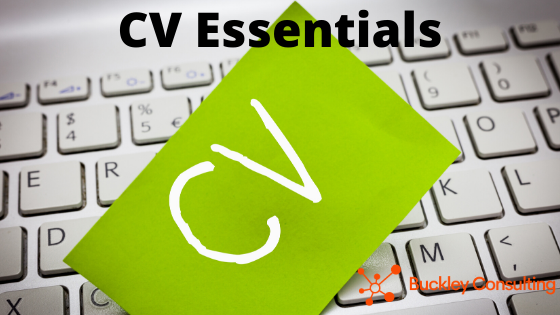
CV Essentials
6 Jan 2020
As your CV is almost always the first point of contact with a potential new employer, and you will have approximately 30 seconds to make an initial impact if you’re lucky, it is essential to get it right.
You don’t necessarily have to have just one CV. Depending on your experience, you may have a couple of versions or even more, which you use to apply for slightly different roles.
Tailor your CV to the role rather than taking a ‘one size fits all’ approach.
What are the starting points?
- clear, uncluttered layout broken up with bullet points
- easy to read typeface
- ideally no more than 3 pages
- absolutely no typos or spelling mistakes. It is worth getting someone to proof-read your CV before it goes anywhere
Is there a format that I should follow?
There are no hard and fast rules although most employers will be looking for the majority of:
- an opening paragraph setting out a brief professional summary including skills
- your experience (work history) in reverse date order
- academic and professional qualifications
- relevant additional skills eg IT skills
- professional memberships
- extracurricular activities (optional)
What do I write about?
There are two golden rules when it comes to content:
- Make sure it is well thought out and relevant– you don’t have to put every detail of every role in your CV, in fact it’s advisable not to! Put yourself in your potential employer’s shoes – what skills are they going to be looking for/what is going to impress them? A good tip is to look at a selection of the sorts of job roles you are likely to be applying for – what skills and experience are they looking for – can you evidence these in your CV, especially in your most recent role(s)? Are you involved in activities outside of work that give you relevant skills eg playing team sports or volunteering. You can use skills gained outside of work in a competency- based interview (see our blog ‘Tell me about a time when…’ for more information).
- Be accurate – however tempting, don’t make things up as you are bound to get caught out! Make sure that your LinkedIn profile and your CV match as most potential employers will also take a look at your LinkedIn profile. On a separate note, do ensure that you have a credible LinkedIn profile with an appropriate image (come back soon or sign up to receive our Blog on ‘Easy steps to a better LinkedIn profile’).
Keep it up to date
Do prune your CV occasionally. As a senior manager or director, your experience as a junior is unlikely to be that relevant anymore, dates, job title and employer names will be sufficient.
Even if you’re not actively looking for a new role, it’s worth always having a CV on file and regularly updating it with notable experiences/responsibilities. That way, if a promotion comes up that you decide to apply for, or a particularly interesting new position does crop up, it’s not such a struggle to remember the projects you have been working on over the last two or three years.